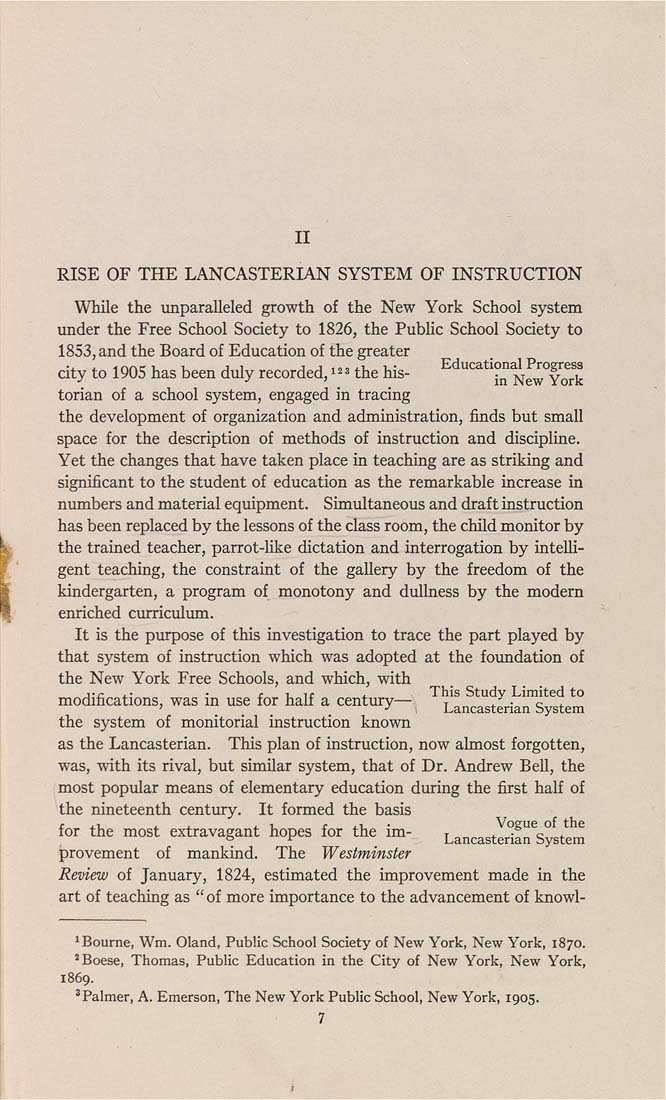11
RISE OF THE LANCASTERIAN SYSTEM OF INSTRUCTION
While the tmparalleled growth of the New York School system
under the Free School Society to 1826, the PubUc School Society to
1853, and the Board of Education of the greater
city to 1905 has been duly recorded,'" the his- "'^^ 'i'n^ew°Y?rk
torian of a school system, engaged in tracing
the development of organization and administration, finds but small
space for the description of methods of instruction and discipline.
Yet the changes that have taken place in teaching are as striking and
significant to the student of education as the remarkable increase in
numbers and material equipment. Simultaneous and draft instruction
has been replaced by the lessons of the class room, the child monitor by
the trained teacher, parrot-like dictation and interrogation by intelli¬
gent teaching, the constraint of the gallery by the freedom of the
kindergarten, a program of monotony and dullness by the modern
enriched curriculum.
It is the purpose of this investigation to trace the part played by
that system of instruction which was adopted at the foundation of
the New York Free Schools, and which, with
modifications, was in use for half a century— .^^ ^ J^ • '"c ^^ „
' ... . Lancasterian System
the system of monitorial instruction known
as the Lancasterian. This plan of instruction, now almost forgotten,
was, with its rival, but similar system, that of Dr. Andrew Bell, the
most popular means of elementary education during the first half of
the nineteenth century. It formed the basis
for the most extravagant hopes for the im- LancastlriS'sfstlm
provement of mankind. The Westminster
Review of January, 1824, estimated the improvement made in the
art of teaching as " of more importance to the advancement of knowl-
^Bourne, Wm. Oland, Public School Society of New York, New York, 1870.
'Boese, Thomas, Public Education in the City of New York, New York,
1869.
^Palmer, A. Emerson, The New York Public School, New York, 1905.
7
|








